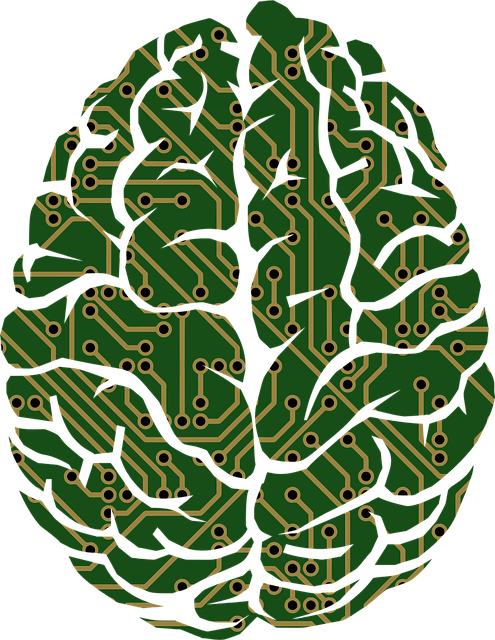
What is Machine Learning?
Machine learning may be referred to as a subcategory of Artificial Intelligence. The basic idea behind this field of computing is providing machines with different sorts of data and making them learn it by themselves. Machine learning is known to be one of the most cutting edge tools being used in the current AI (Artificial Intelligence) market. Massive data sets are used by machine learning systems for training and application of knowledge to excel at different tasks such as translation, object recognition, speech recognition, facial recognition, etc. Unlike the traditional process of deploying specific instructions for completion of different tasks, machine learning enables a machine to learn and master the business of pattern recognition and prediction making at the same time.
What are Neural Networks?
Neural networks may be referred to as the different types of learning algorithms used for the purpose of machine learning. Different layers are used for the analysis and learning of data.
Each one of the hidden layers makes an attempt at detecting picture patterns. Upon the detection of a new pattern, the subsequent layers get activated and the process goes on. The learning of neural networks depends upon the number of layers. Greater number of layers is associated with more accurate pattern detection. Every time some data is processed by the network, the weights are learned and attributed to the connections existing between different neurons. This suggests the fact that the neural network would recognize a pattern better after going through each learning/training transition.
Machine Learning Examples and Applications:
If we take a look at what is going on in our surroundings, we will come to learn that machine learning is already being used around us in different forms. A few example and applications to illustrate this are given below.
- Fighting Web Spam:
Web spam is hated by all the web users as well as most of the major corporations running their business on the internet. That’s the reason why Google has declared a war against web spam. In order to make their efforts more effective, they have been using different machine learning algorithms to fight off spam. Rather than making use of the traditional blacklists, Google has been using a machine learning algorithm called ‘deep learning’ for this purpose.
- Imitation Learning:
Imitation learning may be referred to as a form of observational learning, something we do when we are infants. It is primarily being used in the field of robotics for construction, military, rescue, search and agricultural purposes. - Medical and Assistive Tech:
As defined by David L. Jaffe, assistive robots may be thought of as devices capable of senses and processing the obtained sensory information for helping out seniors as well as disabled people to take care of different everyday tasks. Machine learning is being used for producing medical and assistive tech of different kinds to help the less fortunate people in this regard. - Automated Translation:
Automated translation is known to be a pretty simple and basic concept but it is capable of doing wonders in the translation industry. The world is transforming into a global village where the importance of translating one language into another is increasing with every passing day. Automated translation is something that might revolutionize the whole translation industry since it may carry out the translations for both textual as well as pictorial data at the same time. - Automated video game play:
In comparison to the above applications, this one isn’t a groundbreaking one but keeping in view the ever increasing market for high end games, the automated video game play is surely a popular application of machine learning. An analysis of screen pixels is carried out and different machine learning algorithms are used for training neural networks to play different video games.
Machine Learning Methods: Supervised & Unsupervised Machine Learning
Currently, different types of data scientists are using different types of ML algorithms for pattern discovery in the field of big data in pursuit of actionable insights. Keeping in view the procedure opted for making predictions, the machine learning algorithms may be categorized into two major methods: supervised and unsupervised machine learning. In this Machine Learning Tutorial, details on each type are given below.
Supervised Machine Learning:
Supervised machine learning method supports vector machines and makes use of algorithms like multi class classification, logistic and linear regression, etc. It is more popular among data scientists and hence has more users. This type of machine learning is termed as supervised machine learning since a data scientist trains the algorithm to come up with the right kind of conclusions. In order for this type of machine learning to succeed, it is important for the data scientist to have all the possible outputs at their disposal. Moreover, the training data for algorithms also needs to be labeled using the right answers.
Unsupervised Machine Learning:
Unsupervised machine learning may be thought of as the ultimate or true kind of artificial intelligence as it helps a computer learn the identification of complicated patterns and processes without the requirement of a human guide. This sort of machine learning is considered very complex in the current scenarios but it is capable of solving certain problems that a human being cannot possible solve on their own. A few examples of unsupervised machine learning include association rules, component analysis, k-means clustering, etc.
Taught by:
- Emily Fox, Amazon Professor of Machine Learning.
- Carlos Guestrin, Amazon Professor of Machine Learning.
This Specialization from leading researchers at the University of Washington introduces you to the exciting, high-demand field of Machine Learning. Through a series of practical case studies, you will gain applied experience in major areas of Machine Learning including Prediction, Classification, Clustering, and Information Retrieval. You will learn to analyze large and complex datasets, create systems that adapt and improve over time, and build intelligent applications that can make predictions from data.
- Course 1: Machine Learning Foundations: A Case Study Approach
- Course 2: Machine Learning: Regression
- Course 3: Machine Learning: Classification
- Course 4: Machine Learning: Clustering & Retrieval
Take this Specialization Courses on Machine Learning by University of Washington
More in this Machine Learning Tutorial:
Considering the evolution of computing and technological advancements, data scientists have now been working on a collaboration of both supervised as well as unsupervised machine learning at the same time. This advancement would turn out to be a cutting edge development and is going to be unraveled soon in the near future. Using this collaboration, the supervised algorithm would learn ascribing the inputted labels while the unsupervised algorithm would try separating the patterns into different groups for better and more refined results. This collaborated hybrid between supervised and unsupervised machine learning algorithms is foreseen as something capable of turning the whole field of machine learning around and making it stronger and much more powerful.
Learn the #1 Resource to create Machine Learning Algorithms in Python and R. Machine Learning A-Z Hands-On Python and R in Data Science.
Take this Machine Learning A-Z Hands-On Course at Discounted Price.





